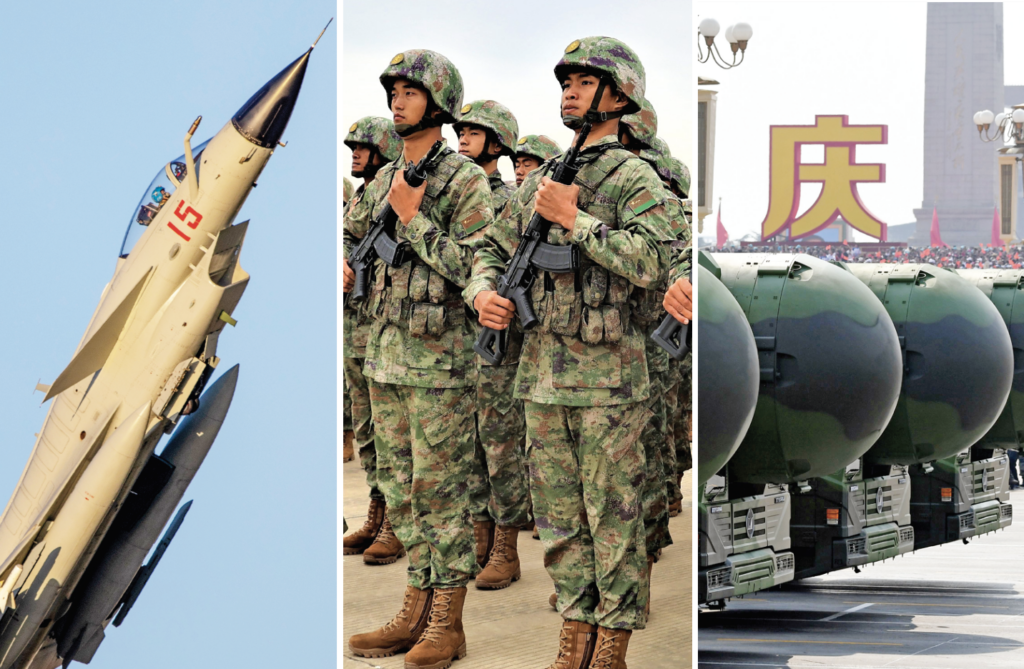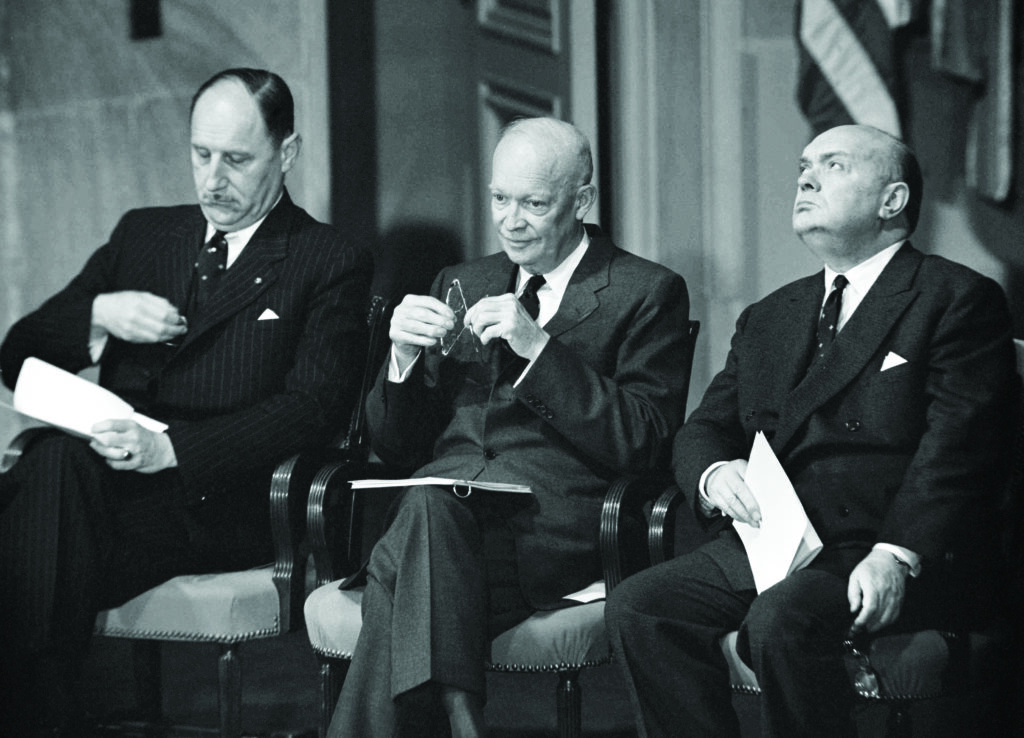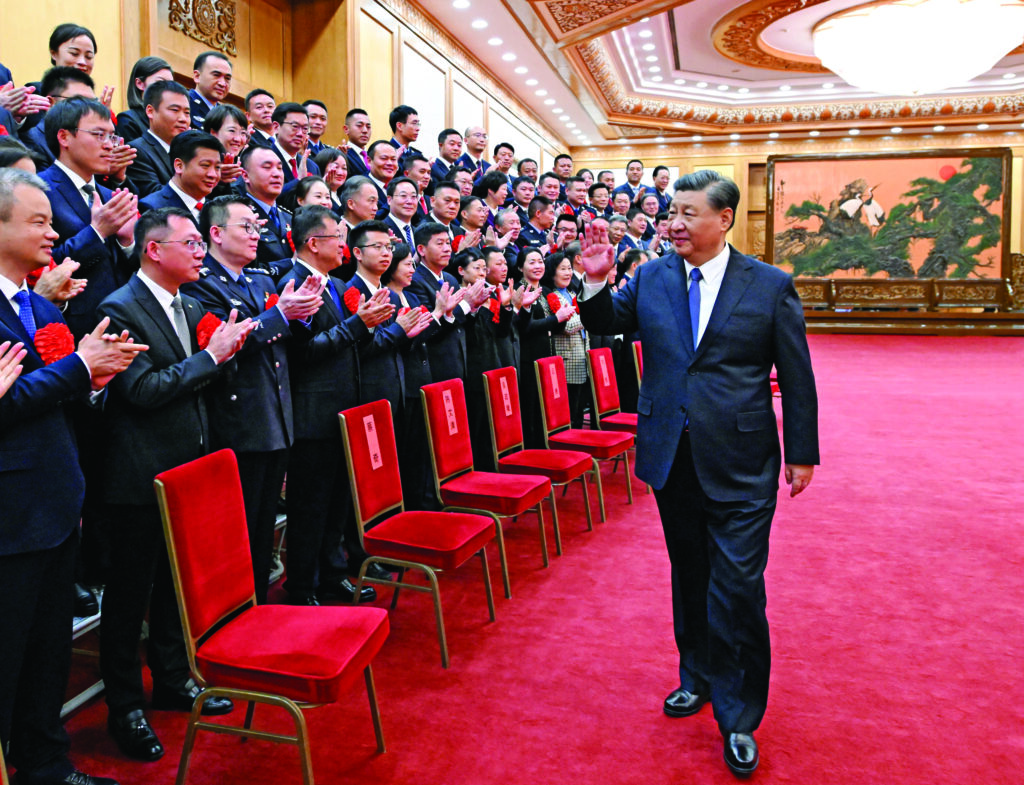American foreign policy is on autopilot and set to crash. Turbulence is already here: Russia’s invasion of Ukraine, Iranian proxies murdering American service members and attacking Israel and key shipping lanes in the Middle East, Cuba hosting foreign spy bases 90 miles from our shores, and both North Korea and China threatening their neighbors in the Indo-Pacific with seeming impunity.
U.S. deterrence is collapsing in every corner of the globe. The core reason behind the collapse is simple: America’s security architecture is from another era, built to combat another foe. The United States needs to revamp its foreign policy, retooling it to fit both the present age and the greatest threat: China.
The Pentagon has clearly stated that China alone is the “sole pacing challenge” confronting the U.S. And it has done so for good reason: China’s military and economic power dwarfs that of Russia, Iran, and North Korea, among other threats. When China rises, Napoleon purportedly said, the world will quake. The tremors are already here.
Indeed, China has already surpassed the U.S. in key metrics. The Office of Naval Intelligence, for example, has noted that Beijing already has 200 times Washington’s shipbuilding capacity. And top Pentagon officials tasked with technological innovation have resigned in protest over China’s growing edge in crucial fields such as artificial intelligence.

Yet this reality has yet to be fully absorbed by U.S. policymakers. What is needed is an all-hands-on-deck approach that spans government, society, and culture. At present, the U.S. is still acting as if it is 1991. But the facts say otherwise.
One can hardly blame the U.S. for holding on to the past. After all, the national security framework that the U.S. adopted in the wake of World War II was astonishingly successful. A combination of great statesmanship and good luck prevented nuclear war and ensured that the West triumphed over Soviet communism.
The U.S. established a host of collective security and monetary arrangements to combat the Soviet threat. The North Atlantic Treaty Organization has proven to be arguably the most enduring among them. As NATO’s first secretary general, Hastings “Pugs” Ismay, famously said, NATO was built “to keep the Russians out, the Americans in, and the Germans down.”
Many of these agreements had one thing in common: They considered the Soviet Union to be the preeminent adversary confronting the U.S. The U.S. government recognized global communism as a threat but clearly prioritized the Soviet Union as the foremost foe. And policy flowed accordingly. All the components of the executive branch, from treasury to defense and beyond, operated with this as an animating idea. Nor was this limited to party politics.

Throughout the Cold War, both Republican and Democratic administrations agreed on prioritizing the Soviet threat. They may have differed on both strategy and tactics, and none were immune to politicizing international affairs, but for nearly half a century, every president acknowledged that the Soviet Union presented the gravest challenge to the American way of life.
To be sure, other threats emerged, such as communism in Asia, Africa, and Latin America, but the U.S. recognized that the USSR alone was a peer adversary. The force structure of the U.S. military reflected this fact. Industrialized Europe remained the priority, with Berlin long considered the top Cold War “hot spot.” Nor was American strategy inflexible. Arrangements were made with non-Soviet communist regimes, such as Mao’s China and Tito’s Yugoslavia.
The national security strategy that the U.S. forged didn’t happen overnight. As Harry Truman’s Secretary of State Dean Acheson noted: “Only slowly did it dawn upon us that the whole world structure and order that we had inherited from the 19th century was gone and that the struggle to replace it would be directed from two bitterly opposed and ideologically irreconcilable power centers.” But dawn it did, and there was widespread recognition that the Soviet Union “seeks to impose its authority over the rest of the world,” as a famous National Security Council document, NSC-68, put it in 1950.
The architects of American grand strategy during the Cold War had another thing in common: They all had “a sense of the tragic,” as one future secretary of state, Henry Kissinger, once put it. Destructive world wars and global upheaval remained in living memory, not mere textbooks. These were men who knew the horrors of industrialized war. As NSC-68 noted:
“Within the past thirty-five years the world has experienced two global wars of tremendous violence. It has witnessed two revolutions — the Russian and the Chinese of extreme scope and intensity. It has also seen the collapse of five empires — the Ottoman, the Austro-Hungarian, German, Italian, and Japanese — and the drastic decline of two major imperial systems, the British and the French. During the span of one generation, the international distribution of power has been fundamentally altered.”

As John F. Kennedy observed in his inaugural address, this was a generation both “tempered by war” and disciplined by a “hard and bitter peace.” There were disagreements over strategy and tactics, but socially, politically, and culturally, American policymakers were largely aware of the costs of war with a peer adversary. They knew that such a war would be industrialized slaughter, where even “the fruits of victory would be ashes in our mouth,” as Kennedy put it. Accordingly, they acted with both a seriousness of purpose and a sense of resolve.
All elements of national power were deployed against the Soviet Union. The U.S. built and maintained a solid defense industrial base, learning from the mistakes of World War II, when the U.S. was caught unprepared for a conflict with industrialized powers.
U.S. grand strategy during this era was both pragmatic and steadfast. It was also hotly debated. American policy toward the Soviet Union was at the center of the national agenda, a subject that any budding official for national office had to address.
As a result, the U.S. won the Cold War against the Soviet Union. But it now stands in danger of losing a new Cold War, to a new and more dangerous foe.
A. Wess Mitchell, a principal at the Marathon Initiative, a Washington, D.C., think tank, has warned that “should China decide to launch an attack on Taiwan, the situation could quickly escalate into a global war on three fronts, each directly or indirectly involving the United States.” America, the former assistant secretary of state concluded in a landmark November 2023 article for Foreign Policy magazine, is a heartbeat away from a war that it could lose.
Decades ago, such a scenario seemed unthinkable. The Soviet regime collapsed on Christmas Day 1991 and the previous January, the U.S. had easily bested Iraq’s Saddam Hussein during Desert Storm. The U.S. was the sole and uncontested world power. Washington still had the ability to fight two major theater wars at the same time, a requirement born from the hard lessons of World War II and maintained for most of the Cold War. In 1991, the U.S. had 51 aerospace and defense “prime contractors.”
China, too, was in a vastly different position, still recovering from the economic devastation brought by decades of rule by communist China regime founder Mao Zedong. Beijing was benefiting from the U.S. aid and assistance that followed the rapprochement of the 1970s. In the 1980s, the rising neighboring economies of Japan and Hong Kong and bouts of pragmatism by Chinese Communist Party head Deng Xiaoping contributed to rapid economic growth. Yet both economically and militarily, China was far from the global power that it is today.
Times change, but human nature does not. China today is bigger and stronger — and keenly aware of its growing power.
China seeks regional hegemony in a part of the world that will soon account for the majority of the world’s GDP. The stakes are massive. For centuries, mastery of Europe remained the objective of regimes from Louis XIV’s France to Hitler’s Germany. Now it is the Indo-Pacific. China seeks to supplant the U.S. as the preeminent Asian power. And a China in control of the world’s largest market area would utterly upend the global system. For many Americans, accustomed to the dominance of the U.S. dollar, it would be life-changing.
China’s actions point to the Middle Kingdom’s ambitions. China’s military buildup, unprecedented in modern history, signals that Beijing intends to project power far beyond its shores. China is building a massive military, and policymakers should assume that Beijing intends to use it.
In 2023, the Chinese government announced a 7.2% increase in China’s defense budget, which had already doubled over the last decade. Matt Pottinger, a former U.S. deputy national security adviser, and John Pomfret, a longtime China watcher and distinguished journalist, have pointed out that China is working to reduce its dependency on foreign grain imports, enacting new military readiness laws, and building or upgrading new air-raid shelters and wartime emergency hospitals.
Taiwan’s minister of national defense, Chiu Kuo-cheng, has warned that China will have the ability to mount a “full-scale” invasion by 2025. CCP head Xi Jinping, the most powerful man to rule China since Mao, has repeatedly vowed to take Taiwan. In a November 2023 meeting, Xi reportedly warned President Joe Biden that he intends to “reunify” China.
The era of unipolarity is over, and the U.S. is confronted with tough choices. Our defense industrial base is a shell of its former self. Instead of 51 aerospace and defense prime contractors, now the U.S. has five. Washington is no longer capable of fighting a two-front war. Our generation of Americans is far removed from the turmoil of the first half of the 20th century. The “sense of the tragic” is, for the moment, in the past.
The public is both weary and distracted from years of economic and domestic upheaval. For many, the popular mood is one of retrenchment. After decades of the global war on terrorism, support for foreign intervention has decreased remarkably.
The U.S. can’t afford to pretend that it is still 1991. As Mitchell noted, “The hour is late, and while there are options for improving the U.S. position, they all require serious effort and inevitable trade-offs.” The U.S. must prioritize.
Prioritization is a sound strategy. During its early years, the U.S. successfully prioritized securing continental and then regional dominance, providing the foundations for its rise as a global power. During World War II, Washington prioritized Nazi Germany over Imperial Japan. The Roosevelt administration did so despite being attacked at Pearl Harbor, correctly recognizing that Germany was the greater threat. And, as noted, during the Cold War, the U.S. prioritized the Soviet Union.
To confront and deter China, the U.S. must prioritize the Pacific. Once this becomes the animating idea for American policymakers, an equilibrium will be established, and better policy outcomes will become more likely. A sense of order will be brought to an increasingly chaotic world.
The U.S. will no longer view the actions of Russia, Iran, North Korea, Cuba, and other threats as distinct and separate. Rather, policymakers will view them, as they should, from the lens of Sino-American competition. What this means in practice is worth exploring.
Current practices, such as the Biden administration reaching out to the Chinese in the vain hope that they will apply pressure on their ally Iran to beseech the Houthis to stop attacking ships, will be correctly recognized as foolish. China doesn’t have an interest in preventing the Houthis from doing so. Indeed, Beijing has invested in relations with Tehran with the express understanding that the mullahs will serve as a regional foil against American interests.
CLICK HERE TO READ MORE FROM THE WASHINGTON EXAMINER
The U.S. should recognize that many existing collective security agreements and arrangements were created with the Soviet threat foremost in mind — and accordingly, they may not be the proper vehicles for addressing China. For example, the U.S. should not pin its hopes on NATO to counter Beijing. Much of this has to do with simple geography. European states are less worried about a rising China than Beijing’s own neighbors. And many NATO members are economically dependent on China. In the event of an invasion of Taiwan, Washington shouldn’t count on many of these countries supporting sanctions, much less bringing hard power to bear. China is a far more immediate threat to nations in the Indo-Pacific, and the U.S. would be wise to keep that in mind when formulating strategy.
This does not mean that the U.S. should abandon NATO — far from it. But it is past time for our European partners such as Germany to pick up their shares of the defense burden in Europe. And in an era of reduced resources and a rising China, failing to do so merely delays the inevitable. At present, the U.S. is only enabling the bad habits of those who free-ride off American security guarantees. In the long run, this doesn’t serve either the U.S. or its European friends.
Sean Durns is a Washington, D.C.-based foreign affairs analyst. His views are his own.
